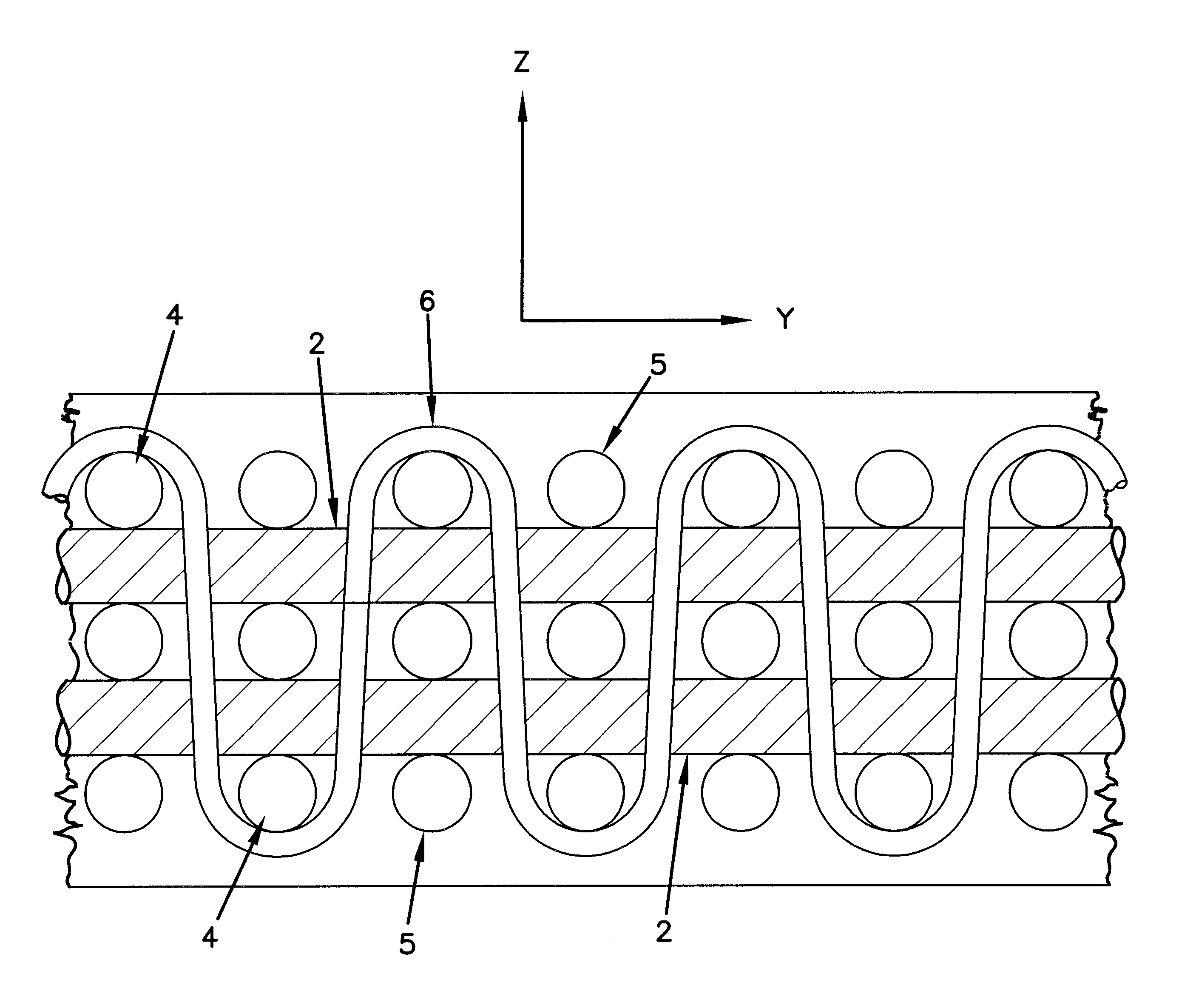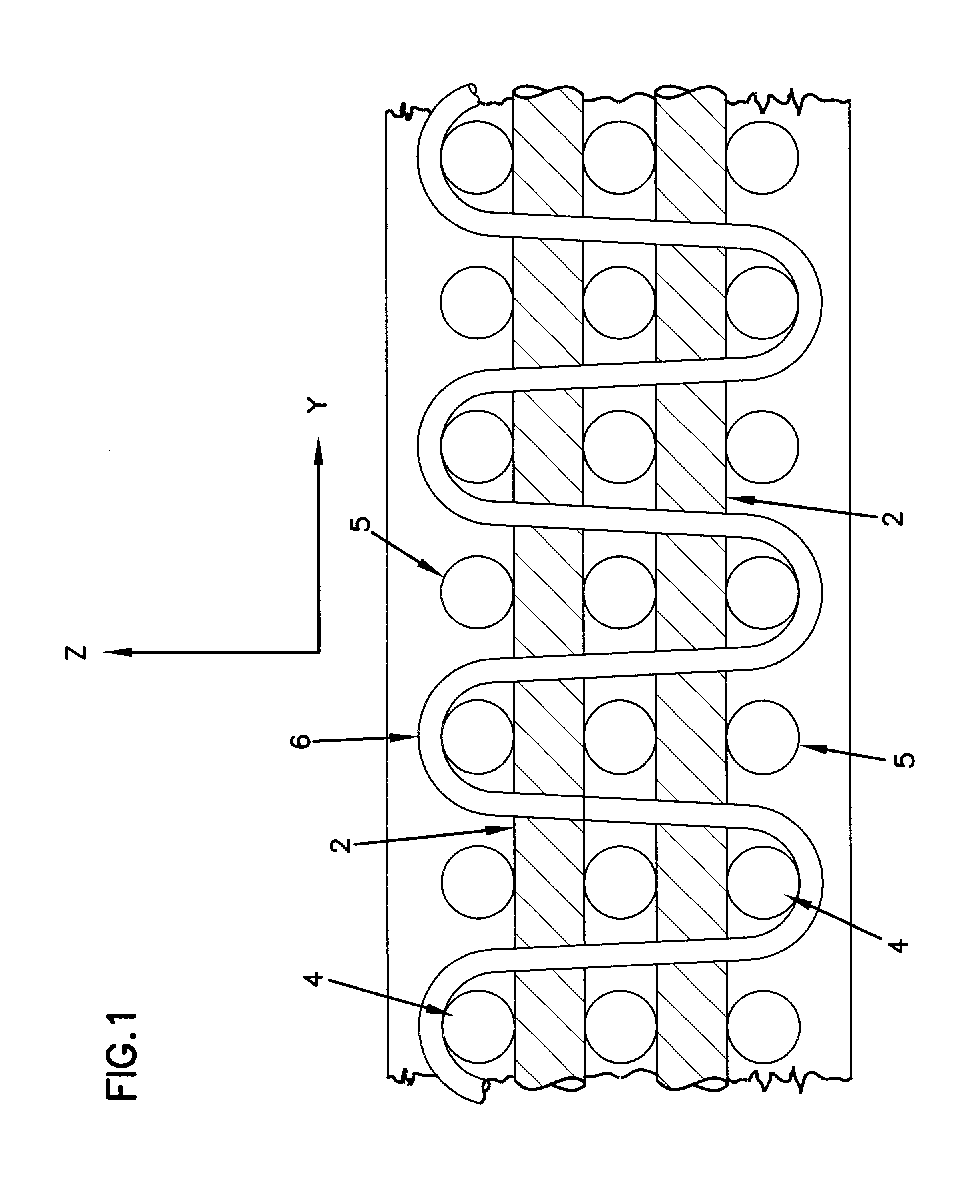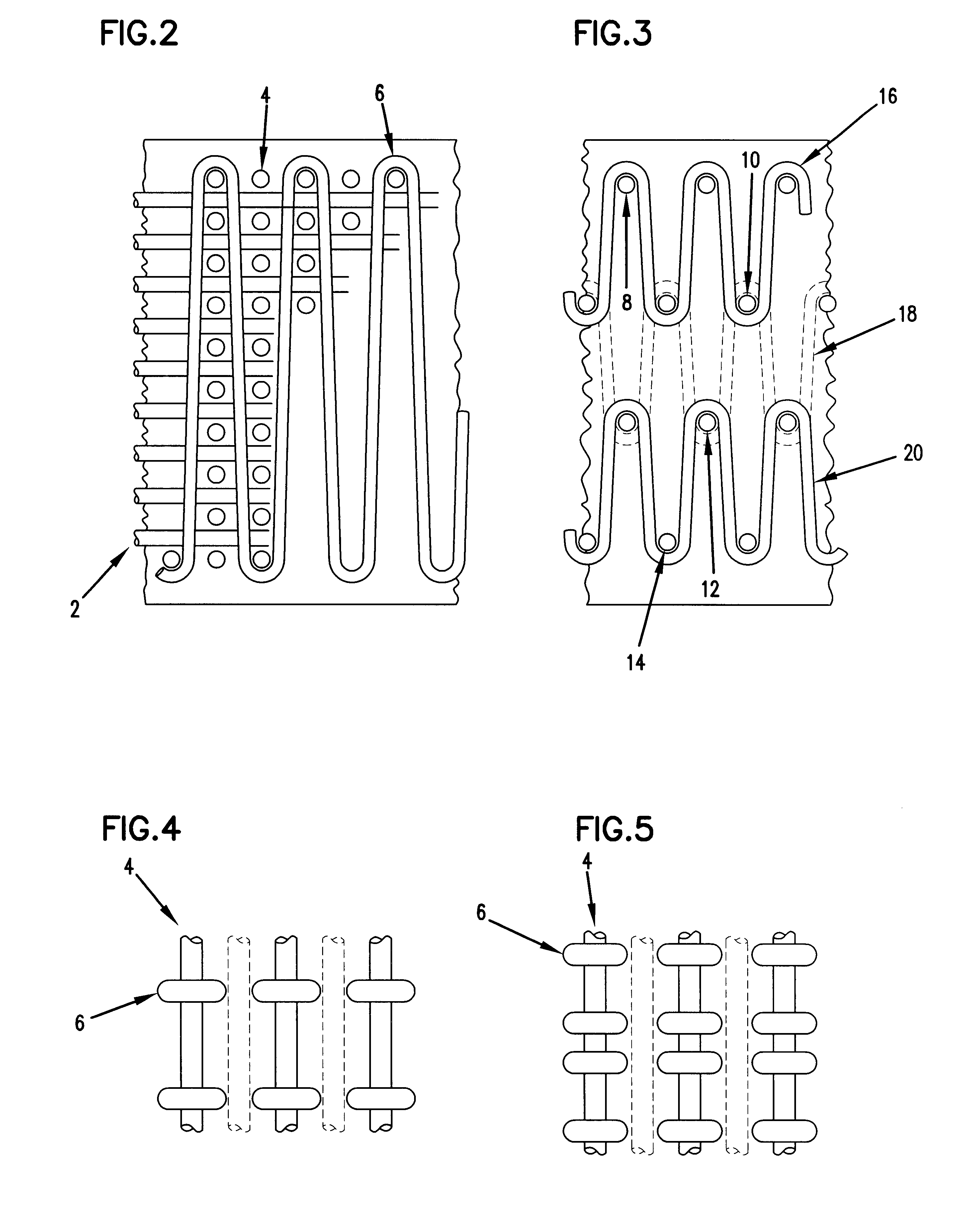Hard impact resistant composite
- Summary
- Abstract
- Description
- Claims
- Application Information
AI Technical Summary
Benefits of technology
Problems solved by technology
Method used
Image
Examples
example 1
This example describes articles according to the invention, namely 5 plates each having outer dimensions of 1500.times.1500.times.200 mm.
The example shows:
1. the construction / design of the articles, including structure of the matrix material and the binder;
2. the composition of the matrix material and the type and amount of the different components;
3. preparation of the plates:
a) processes for mixing the components which form the hard, rigid, tough matrix materials,
b) mixing of the matrix materials (in a fluid to plastic condition) with the dense and strong three- dimensional reinforcing structure of the articles, and
c) solidifying the matrix materials; and
4. the behaviour of the articles according to the invention when subjected to a very large high velocity impact (being hit by an armour-piercing shell weighing 47 kg with an impact speed of 482 m / sec).
Construction of the Articles
5 plates, each having dimensions of 1500.times.1500.times.200 mm, were prepared. The reinforcement is a...
example 2
2 plates having outer dimensions of 500.times.500.times.100 mm were prepared in a manner similar to that described in Example 1, i.e. 3+2 layers of main reinforcement in the form of deformed steel bars interlocked with transverse reinforcement also in the form of steel bars wrapped around the outer layers of main reinforcement. In this case, however, the main reinforcing bars had a diameter of 12 mm and the transverse reinforcing bars had a diameter of 6 mm. The matrix was substantially as described in Example 1, although with the steel fibres being 0.15.times.6 mm (tensile strength 2900 MPa) and the aggregate being SiC instead of bauxite and of a slightly smaller particles size than the bauxite particles of Example 1.
The plates were not subjected to impact testing, but this example illustrates the possibility, in relation to Example 1, to upscale or downscale the size of the shaped articles prepared according to the invention.
example 5
FIGS. 14a and 14b and 15a and 15b show schematically two different reinforcing systems according to the present invention and how these systems react under high velocity impact, while FIGS. 16-18 show examples of prior art reinforcing systems and how these react under high velocity impact.
FIGS. 14a and 14b and 15a and 15b show cross sections of reinforcement according to the invention with a top layer of main reinforcement 1 and a bottom layer of main reinforcement 2. (As shown e.g. in FIGS. 1-3, there will typically be several layers of main reinforcement, as well as main reinforcement extending both in the plane of the paper and perpendicular thereto, but for the sake of simplicity only the top and bottom layers of main reinforcement are shown in the figures related to this example).
This example shows the effects of subjecting the various plates or plates shown to a momentary high velocity impact from above, e.g. by means of an explosive as described in Example 4. The pressure imp...
PUM
| Property | Measurement | Unit |
|---|---|---|
| Fraction | aaaaa | aaaaa |
| Fraction | aaaaa | aaaaa |
| Fraction | aaaaa | aaaaa |
Abstract
Description
Claims
Application Information
 Login to View More
Login to View More - R&D
- Intellectual Property
- Life Sciences
- Materials
- Tech Scout
- Unparalleled Data Quality
- Higher Quality Content
- 60% Fewer Hallucinations
Browse by: Latest US Patents, China's latest patents, Technical Efficacy Thesaurus, Application Domain, Technology Topic, Popular Technical Reports.
© 2025 PatSnap. All rights reserved.Legal|Privacy policy|Modern Slavery Act Transparency Statement|Sitemap|About US| Contact US: help@patsnap.com



